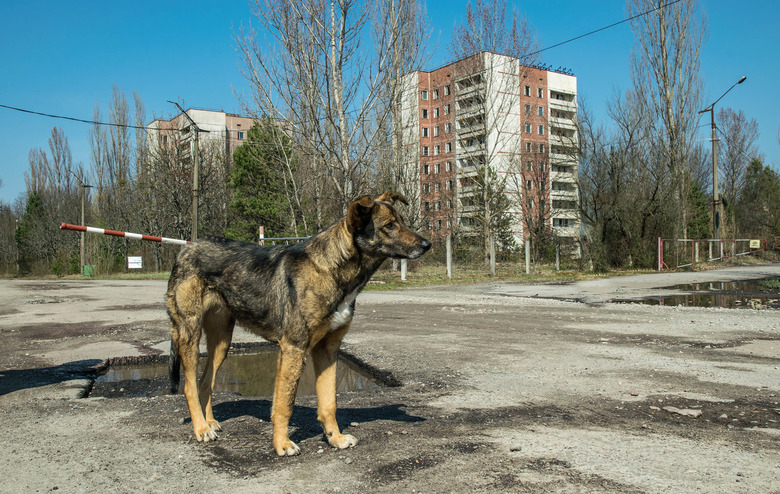Dogs In Chernobyl Are Evolving Faster, New Study Claims
The explosion of the Chernobyl reactor in 1986 left a large area around the plant uninhabitable by humans because of lingering nuclear radiation. However, animals, like feral dogs, have continued to strive within the area, and new research shows that some Chernobyl animals may be evolving faster than others.
The new study featured in the journal Science Advances earlier this month showcases an examination of over 300 feral dogs living within the Chernobyl Exclusion Zone (CEZ). Compared to dogs living just 10 miles from the CEZ, the Chernobyl dogs show key differences that suggest they may be evolving.
The research didn't state what the differences were. However, the paper does explain that they discovered at least ten significant differences in the genetics of the dogs living closer to the Chernobyl facility.

While it is possible that these drastic changes were caused by the radiation within the area, and the genetics of the Chernobyl dogs evolving more rapidly than those outside the higher radiated areas, it's also possible that other factors could be in play, though.
Currently, the researchers cannot determine whether the radiation is the cause of the genetic changes seen in the Chernobyl dogs or if all the other Chernobyl animals have experienced similar evolutionary changes because of their proximity to the radiation, too.
More extensive research is needed to properly determine whether or not the genetic differences that the researchers noticed in the Chernobyl dogs is caused by radiation or other factors. Uncovering what is responsible for these changes will give us a better idea of what to expect from prolonged radiation exposure in animals.
The most exciting thing here is that an area that should — by all rights — be considered a wasteland has continued to thrive, despite the heavy blanket of radiation that still covers it 40 years after the terrible catastrophe that left the area around Chernobyl in decay. Chernobyl isn't the first place that nature has taken over after a disaster. The Fukushima nuclear disaster also left nature running free after it happened in 2011.
